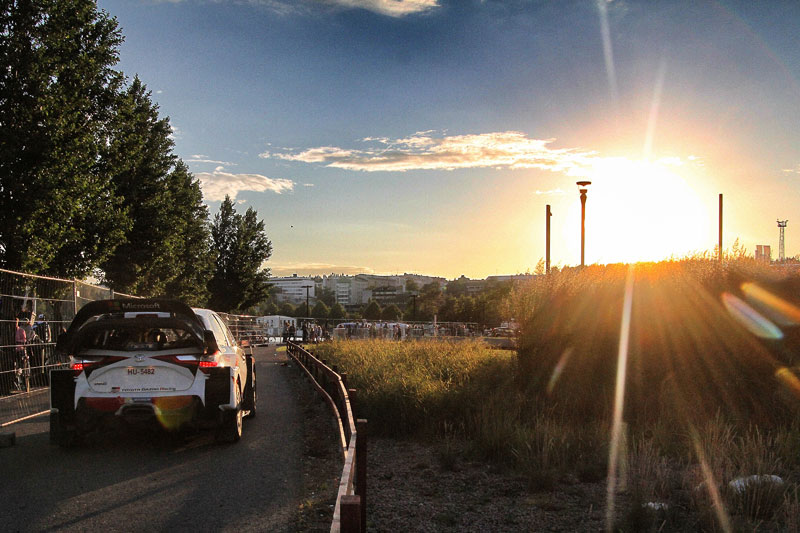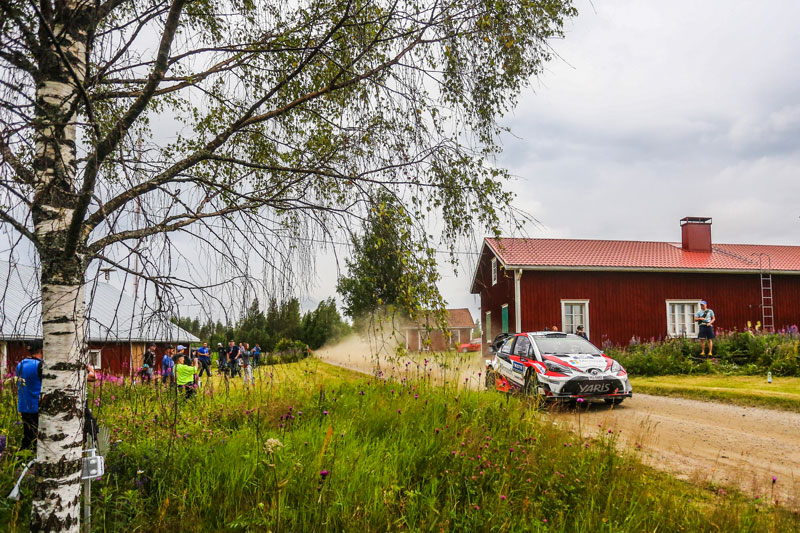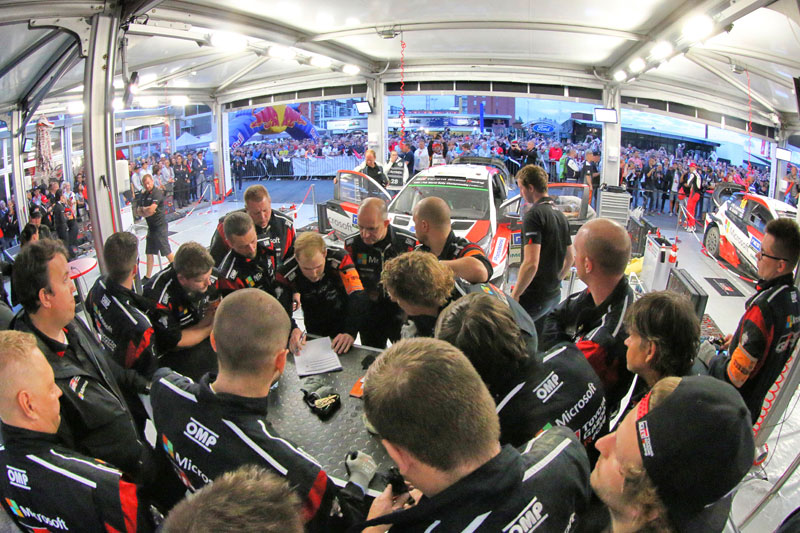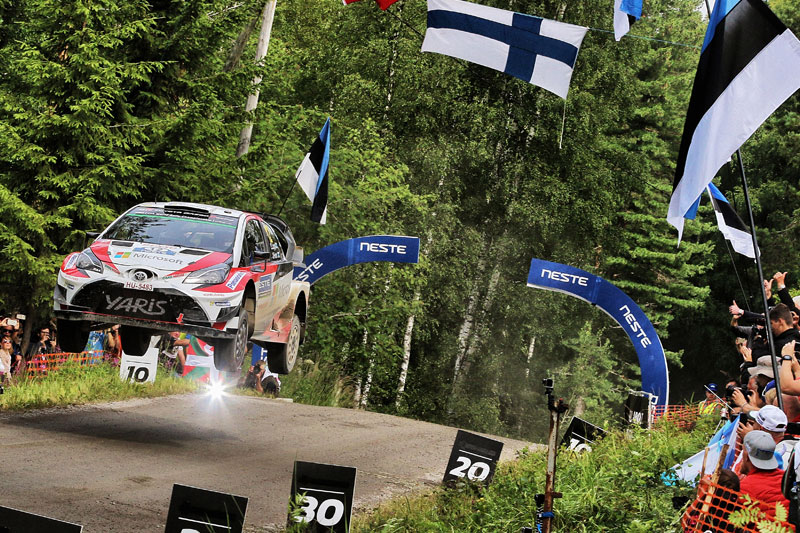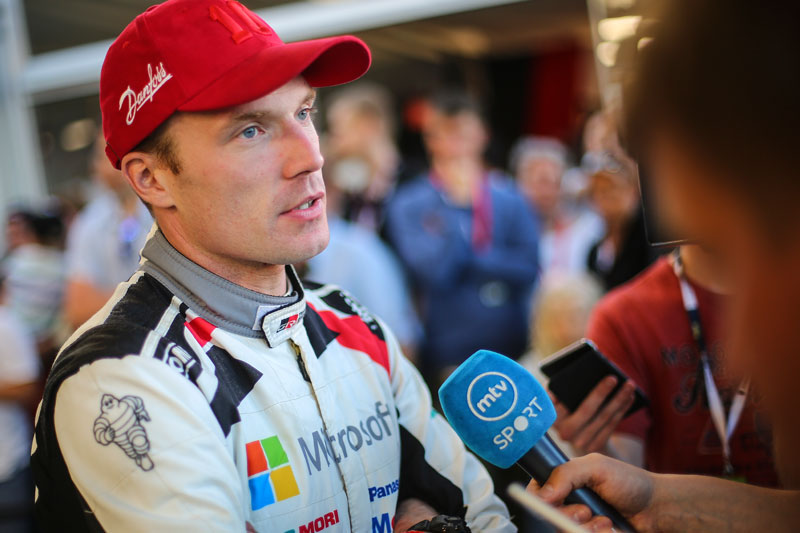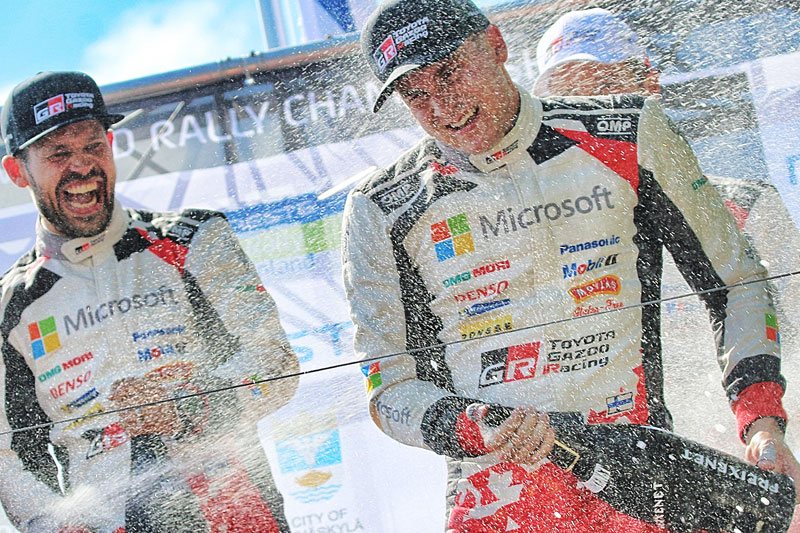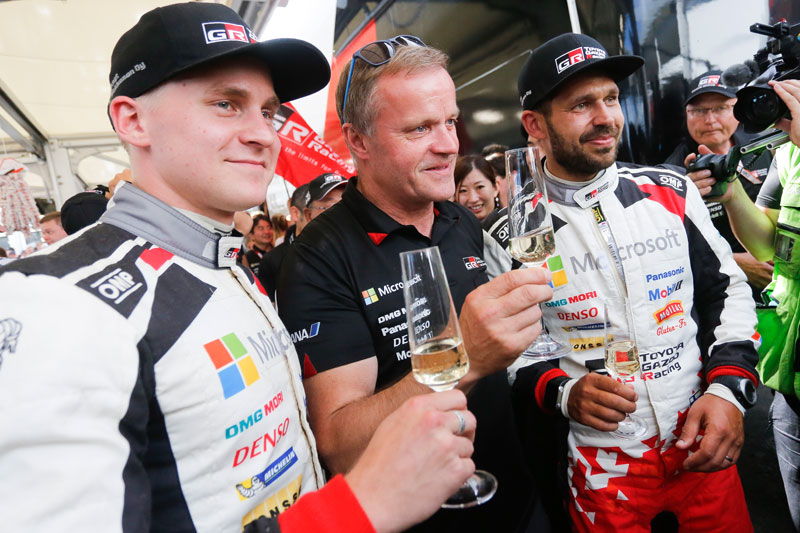Rally Finland
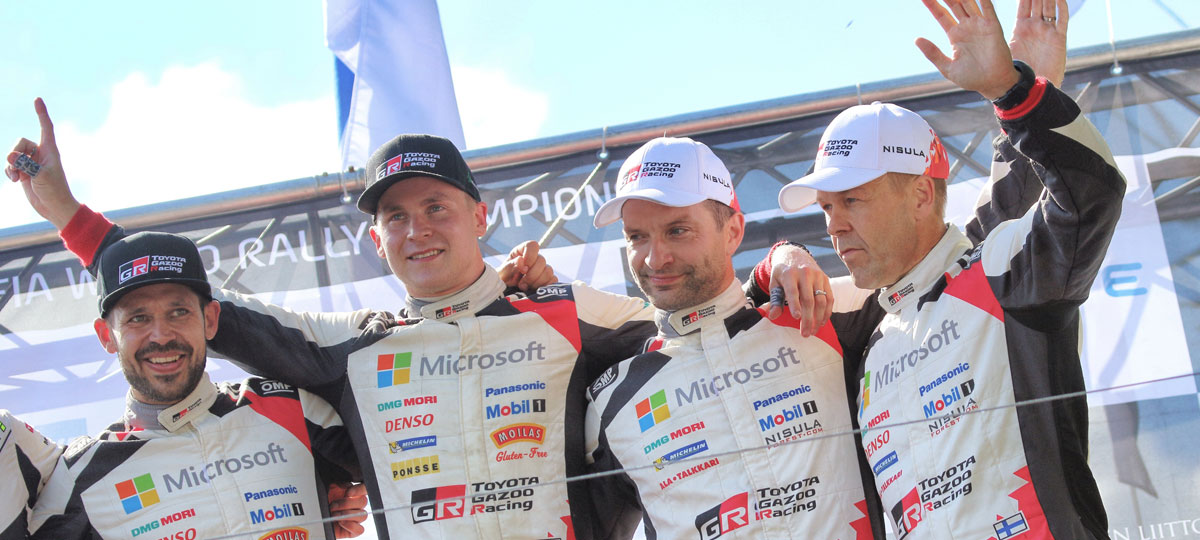
TOYOTA GAZOO Racing secures a 1-3 finish on home soil as it wins its second rally of the season.
However, the team’s quest to make ever-better cars continues.
It all started three years ago at Rally Finland
Three years ago, in July 2014, Akio Toyoda, president of Toyota, visited Rally Finland for the first time and made a significant decision: “Let’s make Finland the base for our WRC team.” President Toyoda sat in the passenger seat of the GT86, the rally car created by four-time World Rally Champion Tommi Mäkinen, and actually completed the Ouninpohja Stage, which is considered by many drivers to be the WRC’s best SS. Having experienced the excited faces of the roadside spectators, the splendid atmosphere of the rally, and the course itself which placed great demands on the rally car, President Toyoda was convinced that Finland would be the ideal development base for making ever-better cars. While driving the Finnish roads, he held in-depth discussions about making cars with Mäkinen and, having struck up a fine rapport, selected the Finn to be his project leader. Having succeeded in establishing a team and car in an exceptionally short time frame, Mäkinen entered two Yaris WRCs at the season-opening Rally Monte Carlo. As can be seen, it all started three years ago at Rally Finland.
An ordinary road relied upon by the public becomes the world’s greatest Special Stage
The Rally Finland roads that made such an impression on President Toyoda were gravel roads that passed through forests and which followed the natural terrain. Finland’s main highways are, of course, paved. Away from the cities, however, a large number of roads remain unpaved, and they serve as important lifelines for local residents. Rally Finland takes place on gravel roads in the vicinity of Jyväskylä, in Central Finland; the roads are wide, with gentle corners and frequent ups and downs. Those experiencing Finland’s gravel roads for the first time will, almost certainly, be overwhelmed by their raw power, even when driving within the prescribed speed limit. For Rally Finland, these public roads morph into SSs. Cars and their drivers compete at the absolute limit at the gravel rally with the highest average SS speed in the WRC. In other words, there is no great distinction between public roads and SSs—people who drive these roads on a daily basis naturally improve their driving skills. The type of environment that shapes so many of the WRC’s outstanding drivers can be found in abundance in Finland.
Aiming to develop a car in which drivers can have absolute confidence
The TOYOTA GAZOO Racing World Rally Team’s three drivers, as well as the co-drivers who support them, are all Finnish. They were raised and trained on roads which snake not just left and right, but also undulate up and down, and whose corners must often be negotiated while jumping. And the Yaris WRC, the development of which was led by the Finn Mäkinen, is designed to be able to demonstrate its full potential on these sorts of roads. The Yaris WRC’s aero parts work to increase down force the faster it goes, thereby improving its stability. In addition, long-travel suspension helps to keep the tires in contact with the ground for as long as possible when the car becomes airborne. Mäkinen commented: “We aimed to develop a car that would give the drivers confidence and enable them to drive with peace of mind in all conditions. No matter how great a car we build, its performance cannot be fully extracted unless the driver has complete confidence in it. I understand this because I was once a driver, too. For this reason, we aimed to develop a car in which drivers could have absolute confidence.” And at Rally Finland, the team’s home event, the Yaris WRC—which Mäkinen had devoted himself to together with the rest of his team—was able to demonstrate its full potential.
Lappi and Latvala head the rally with fastest times in successive SSs
Latvala recorded the best time on SS3—the third stage of the rally—and led the rally standings after SS4. Then Lappi, in only his fourth World Rally event, recorded the fastest times in four stages in succession, from SS4 to SS7. He said, “I am able to drive the car with confidence—and I even have the ability to drive faster,” he added a fourth SS fastest time. At the end of Day One, after the conclusion of SS10, he had overtaken Latvala to lead the overall standings. On Day Two, Latvala had to endure disadvantageous early start times—on Day Three, however, this was no longer the case, and the Finn was able to showcase his true ability. He set the fastest times in five stages in a row—from SS14 to SS18—to pass Lappi and return to the top of the overall standings. Latvala commented, “The Yaris WRC’s handling on high-speed courses is truly outstanding,” while Lappi said in admiration of his teammate, “I cannot cope with Jari-Matti’s speed.” When Juho Hänninen temporarily rose to third, the three Yaris WRCs occupied the top three positions in the rally.
However, an unbelievable turn of events awaited the previously unshakeable Latvala. On SS19, while driving in excellent shape, he suddenly came to a standstill in the middle of the stage—his car had suffered an issue with its electronics system. Latvala and his co-driver Miikka Anttila attempted to fix the problem themselves, but they could not get the car started and were forced to give up the victory that looked to have been theirs for the taking. Latvala swallowed his disappointment, and took a positive outlook on the rallies to come: “It’s devastating but it’s part of motorsport. The Yaris WRC is undeniably fast, and this fills us with confidence for future rallies.”
TOYOTA GAZOO Racing takes great confidence from its second victory of the season—however, the quest to make ever-better cars continues
With Latvala’s retirement, Lappi found himself leading the overall standings. He had mixed feelings about his position: “Jari-Matti was genuinely fast. So, coming first in this way is not what I wanted to happen.” However, he raised his concentration with the aim of securing his own first-ever victory, and the team’s second victory of the season. Lappi had a comfortable lead, but he was well aware of the difficulties of maintaining it through to the finish. Lappi remained focus until the final stage of the final day, and so won his first ever WRC victory in his home country. When Lappi completed the final SS, Mäkinen, Latvala, and Hänninen—who secured his first ever podium finish in third place—rushed over and celebrated the victory of their young teammate as if it was their own. The team had developed the Yaris WRC together and competed together—and this victory was a team victory.
Mäkinen expressed his delight at winning on home soil before swiftly turning his thoughts to the next round: “This rally is proof that our approach to making cars is correct. It also shows that Lappi is a driver of extraordinary talent. However, our battle does not end here. Jari-Matti was beset by troubles we haven’t seen before, and we are extremely sorry it prevented him from winning. We will do everything we can to ensure it will never happen again. The next round, Rally Deutschland, is a tarmac rally—and this is a surface we have to improve on. In order to make ever-better cars, we must focus even harder on development.”
RESULT
| Pos | Driver | Co-Driver | Vehicle | Time |
|---|---|---|---|---|
| 1 | Esapekka Lappi | Janne Ferm | Toyota Yaris WRC | 2h29m26.9s |
| 2 | Elfyn Evans | Daniel Barritt | Ford Fiesta WRC | +36s |
| 3 | Juho Hänninen | Kaj Lindström | Toyota Yaris WRC | +36.3s |
| 4 | Teemu Suninen | Mikko Markkula | Ford Fiesta WRC | +1m01.5s |
| 5 | Craig Breen | Scott Martin | Citroen C3 WRC | +1m22.6s |
| 6 | Thierry Neuville | Nicolas Gilsoul | Hyundai i20 Coupe WRC | +1m33.1s |
| 7 | Ott Tänak | Martin Järveoja | Ford Fiesta WRC | +1m53.6s |
| 8 | Kris Meeke | Paul Nagle | Citroen C3 WRC | +3m12.6s |
| 9 | Dani Sordo | Marc Martí | Hyundai i20 Coupe WRC | +4m11.5s |
| 10 | Mads Østberg | Torstein Eriksen | Ford Fiesta WRC | +4m21.2s |
| 21 | Jari-Matti Latvala | Miikka Anttila | Toyota Yaris WRC | +20m15.8s |

